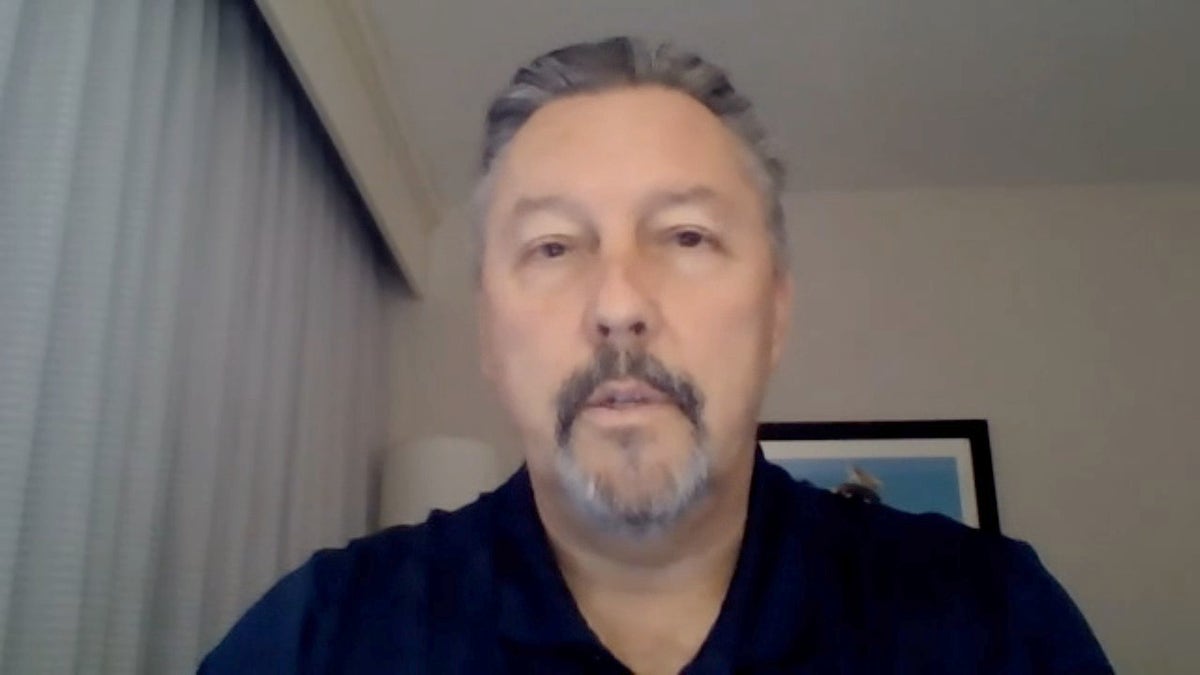AI component of ‘swatting’ incidents is 'frightening': 30-year cop
As more swatting incidents are reported, two former law enforcement officers warn about artificial intelligence's negative impact on combatting false threats.
Artificial intelligence advancements have helped drive an increase in swatting calls, forcing police to dash to scenes prepared for the worst and endangering Americans' emotional health or even their lives, a 22-year FBI veteran told Fox News.
"They're doing it to create chaos," said James Turgal, vice president of the information security company Optiv. "They're utilizing this technology, which emboldens them because it's so much harder for law enforcement to track that back."
AI COMPONENT ON SWATTING IS ‘FRIGHTENING’: FORMER COP
WATCH MORE FOX NEWS DIGITAL ORIGINALS HERE
Swatting — when someone makes a false 911 report to illicit a large and aggressive police response — has become increasingly common over the last decade as it becomes easier for callers to mask their voices, phone numbers and IP addresses to remain anonymous. A nationwide database the FBI created this year because of the rise recorded over 200 occurrences since May 1, according to the FBI.
"The FBI takes swatting very seriously because it puts innocent people at risk," a FBI spokeperson told Fox News on Thursday. "We will continue to work with our local, state, and federal law enforcement partners to gather, share, and act upon threat information as it comes to our attention."
Before the database's inception, swatting calls were not officially tracked. But a former FBI agent, Kevin Kolbye, estimated incidents jumped from 400 in 2011 to over 1,000 in 2019, according to a Anti-Defamation League report.

Swatting calls are false 911 reports that are made in an attempt to trigger a powerful police response. Growing concerns about swatting led the FBI to start a national database for tracking the incidents. (iStock)
SEATTLE MAN ARRESTED FOR OVER 20 ‘SWATTING’ CALLS IN US, CANADA
"They're utilizing different virtual private networks, they're bouncing off of IP addresses from different places trying to anonymize themselves, and it's really the ability to wreak as much emotional havoc as possible," Turgal said. "There's a number of different motivations for it, and none of them are good."
Turgal said swatters want to create emotional distress and put Americans in harm's way. He estimated that swatting incidents have at least doubled in the last year.
"There are some threat actors out there that actually do this as a service, as sick as that sounds," Turgal said. "They actually put themselves out on the dark web and think, 'well, we'll dox, or we'll SWAT any type of organization that you want us to. You pay us a fee, and we'll do it.'"
He also said overseas terrorists could use AI masking technology to make swatting calls.

James Turgal, a 22-year FBI veteran and the vice president of a information security company, says swatting could allow threat actors from overseas to cause harm on Americans. He says advanced technology has made swatting incidents occur at a higher scale. (Fox News Digital )
"There's a lot of countries out there now, not to be named, that would like to see the U.S. in chaos," Turgal added. "They would like to create help to create that situation."
Schools have also become targets for fake threats. Nearly 64% of all violent incidents for the 2022-2023 school year were false active shooter reports, according to the Educator's School Safety Network.
"Threat actors out there are utilizing this technique to really cause a lot of harm and a lot of damage to a lot of local schools," Turgal said. "It's not just the law enforcement officers that are there rolling into this situation that they don't know what it is. It's the students. It's the faculty. It's the parents."

School shootings have been on the rise in the U.S., but now some criminals are putting in fake shooting hoaxes at schools to cause emotional distress. (AP Photo/Mark Humphrey, File)
"There is a tremendous mental and emotional impact that occurs with these cases, and that's why they're so difficult," he continued.
On March 30, for example, 36 false reports of mass shootings affected nearly 230 New York Schools, ABC News reported.
Some swatting calls have even turned deadly. A police officer, for example, shot and killed a Kansas man during a response to a hoax call in 2017.
FLORIDA SCHOOLS SEE SEVERAL ‘HOAX’ SWATTING CALLS, FORCING MULTIPLE LOCKDOWNS
Thor Eells, executive director of the National Tactical Officers Association, trains around 12,000 law enforcement officers annually. He said his group has to consider the added concerns from advanced AI when it teaches about swatting.

Thor Eells, executive director of the National Tactical Officers Association, says they have done more training for law enforcement in recent years about swatting. He says artificial intelligence's ability to make voices sound more credible is concerning. (Fox News Digital)
"The authenticity component of the AI is frightening," Eells told Fox News. "It's really incumbent upon us now to be more proactive than ever in recognizing that these technologies can be used in a negative manner as well as a positive manner."
AI STEPPING IN TO ASSIST 911 OPERATORS BATTERED BY TRAGIC CALLS, UNDERSTAFFING
One of the concerns police officers face when handling a false threat is the possibility that the hoax was staged so someone could distract law enforcement as they commit a crime elsewhere, Eells said.

Eells raises concerns about criminals drawing cops attention away from where they aim to commit a crime by calling in a false threat elsewhere. (Credit: Fox 29)
"When you do draw limited resources away from an area and then have an incident of legitimate criminal purpose take place, it's a delayed response," Eells said. "That could have an impact on the outcome."
CLICK HERE TO GET THE FOX NEWS APP
Eells stressed communication between police, schools and the community as the key factor in curbing cyber crime threats.
"It is very, very important for law enforcement … from their 911 communications centers to their first responders, to their supervisors, to be proactive," Eells said. They should be "educating, gaining knowledge, and putting steps and procedures into place to mitigate and to minimize the dangers involved with this."
Ramiro Vargas contributed to the accompanying video.
























